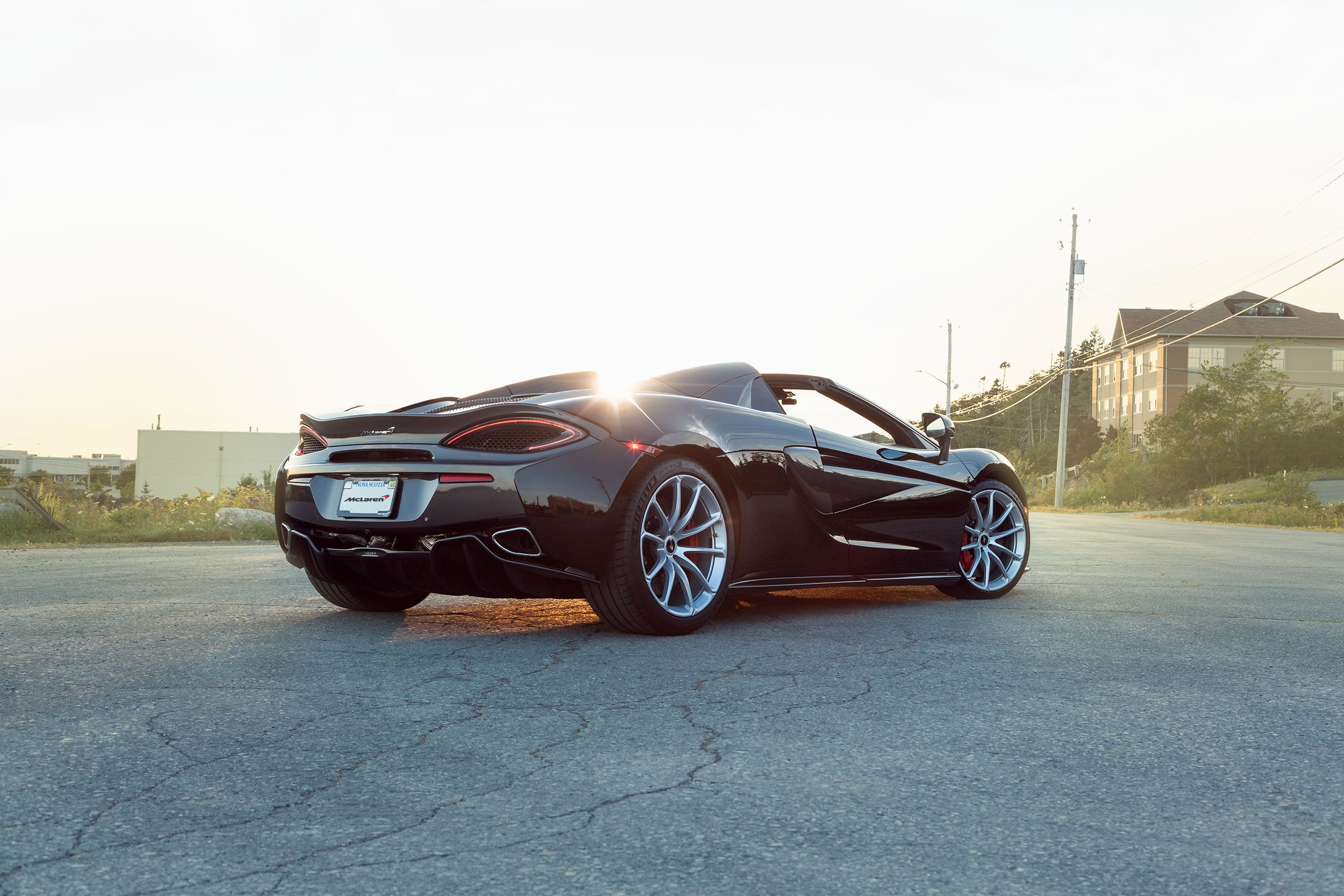Essentials of Car Photography: Make Any Vehicle Look Amazing
Over more than ten years, automotive photography has allowed me to capture a diverse range of vehicles of different types and values. Whether an expensive exotic or an everyday commuter, I believe each car deserves the same attention to detail to showcase its unique character through photography. With thoughtful planning and strategic execution, virtually any vehicle can be a captivating photographic subject. In this post, I want to share practical insights and actionable tips that will help enhance the visual appeal of any vehicle.
Lower angle - McLaren 570S Spider
1. Set the Stage
Automotive photo shoots can vary in terms of locations and the ability to move the vehicle, making your considerations limited or unavailable altogether. However, if you have the flexibility, the first and most important step is preparing your environment and surroundings to complement and enhance the vehicle you photograph. Preparing can involve selecting an appropriate location with a great backdrop that complements the car’s style and character. But sometimes, matching up a futuristic vehicle with a modern background or a classic with an aged or abandoned background is impossible. In that case, a visually appealing background free from distractions will suffice. Along with a proper backdrop, you should also consider the lighting and overall atmosphere. As cars are incredibly reflective, having a stage with minimal reflections in the car’s body is essential, as it can make or break your photo, as reflections can be distracting and look messy.
2. Clean it Up
A clean car can make a world of distance in your photo’s professionalism. However, shooting from a distance, a mildly dusty car is probably okay, and shooting during low light helps a lot. However, once you start to get close-up, you will want the vehicle to be as clean as possible. You will quickly notice brake dust, wheel dirt, and minor imperfections when shooting close.
3. Look for Great Light
Composition is integral in creating visually appealing photographs, and lighting is a crucial composition ingredient. If you are shooting in natural light, there is no question that early sunrise, golden hour, and near sunset are best. I cannot overstate the visual appeal of this light as the soft light provides very flattering illumination and great colour and is a big assist for a great photo. If you don’t have the luxury of shooting during this optimal time, you can still do some interesting things during mid-day. You’ll want to find shade or try exciting compositions with harsh shadows, such as the car being partially lit and partially hidden within the shadow.
If you shoot indoors or in low light conditions, artificial lighting setups may be necessary to illuminate the car properly. You can use strobes to light the vehicle or light paint using a constant light source. Both can be very effective and create stunning results.
Late day light - Mercedes-AMG GLA45
4. Try Different Angles and Perspectives
Walk around and study the subject to understand it before jumping in and taking photos. Vehicles contain many angles, curves, and features, and you will want to experiment with different angles and perspectives to highlight those aspects. Shooting from eye level can provide a natural and familiar perspective, but familiarity can be tedious. Shooting from low angles can create a sense of drama and give the car a more significant presence in your frame. Furthermore, getting higher captures a viewer’s attention as it’s not an angle from which people usually view cars.
5. Experiment with Depth of Field
Aperture plays an essential part in the composition, depending on your subject, its background, and where you want your interest to be. Depth of field allows you to selectively focus on some aspects while blurring the background, emphasizing the details. You can use a telephoto lens and shoot the entire vehicle from a distance, which can be very useful for a cluttered background by putting distance between the background and your subject. You can use a macro lens and shoot a close-up, capturing fine details of your subject. Macro lenses also work well when shooting interior details and car emblems.
Conclusion
Automotive photography is a blend of visual and technical finesse, requiring careful consideration of location, lighting, cleanliness, composition, and equipment. A complementary location during an optimal time of day significantly increases the visual impact of your photographs, and a clean vehicle photographed from various angles and perspectives is essential to showcase each vehicle’s unique features and personality.

